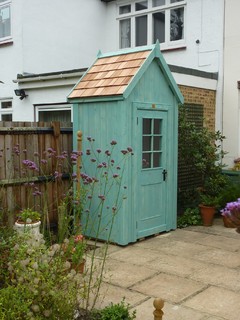Spring is a time we un-clutter our world. If you have lots of excess stuff to get rid of consider holding a garage sale.
Having a garage sale takes work and can be extremely frustrating if you don’t know what you’re doing. To avoid any headaches and to streamline the process, follow a plan from beginning to end. A well-planned garage sale often means a more successful one, which means more money in your pocket at the end of the day.
Planning Your Garage Sale
1. Pick a Date
The first step is to choose dates and times for your garage sale. Most people go with Friday and Saturday mornings, but you can add Thursday or Sunday to a multi-day sale if your schedule allows. You’ll get a larger crowd if you start early because people won’t have to interrupt their day to attend your sale, and it’s likely to be cooler out which is an important consideration especially in the heat of summer. I typically run my garage sales Friday and Saturday from 6 a.m. to noon.
Pro Tip: If possible, hold your garage sale when the weather is moderate. Skipping out on the sweltering August heat and waiting for the end of September will give you a better shot at having a successful sale. You’ll get the most customers in the late spring or early fall.
2. Gather Your Goods
Garage sales offer a great way to declutter and downsize your house. Grab a box and go through every room. Pick up anything you don’t want or haven’t used in months and toss it in. Don’t forget closets, attics, basements, and garages as these are usually treasure troves for garage sale finds. Don’t underestimate the value of what you find either; people will buy anything from old CDs to unwanted bottles of perfume. After all, the worst case scenario is that something doesn’t sell.
Pro Tip: Have any old power strips, cell phone chargers, or USB cables you’re not using? Throw them in a separate shoe box to sell at the garage sale. It doesn’t matter if you’re not sure what that charger even worked for; someone may buy it.
3. Check on Permits
Many cities now require that you have a permit to run a garage sale. Check with a clerk at your city or town hall to find out if you need one. Don’t try to run a garage sale without it or you may end up getting shut down and fined.
Pro Tip: Some cities allow you to apply for permits online. Check your town hall website and look under the “permits” or “civic responsibilities” section to see where you can apply.
Advertising Your Garage Sale
1. Create a Newspaper Ad
If you want to drive major traffic to your garage sale, fork up the money to pay for an ad in your local newspaper. But before you write your ad, find out how much space you get for the price you’re willing to pay. If you go over, you’ll end up paying per word, which can get very expensive fast. Keep your ad short and pointed, and list your biggest ticket items first. The most popular garage sale items include furniture, kids’ toys, and collectibles. Don’t forget to include your address as well as the dates and times your sale will run. The Rocky Mountain Outlook and the Crag & Canyon are two great local options.
Pro Tip: Consider advertising in your local paper as well as the major daily newspaper in your area. Most local papers charge $15 or less for ad space, and every home in the area gets a free copy, which means more potential customers for you.
2. Advertise Online
There are dozens of websites where you can advertise your garage sale for free. Post an ad on as many as you want, but aim for at least three. For example, I use:
- Craigslist
- Your Facebook Page
- Kijiji
You’ll have more wiggle room in the text of your online ad since most websites give you a generous word count. Feel free to describe your items in detail, but avoid sounding like a marketing executive. Simply tell people what you have and when you’ll have it, and let their own imaginations work out how wonderful it is. Also, don’t post your ad too early. If you’re holding your garage sale on Friday, it should go up Wednesday night or Thursday afternoon.
It’s also a great idea to utilize free social media marketing sites to get the word out in your local area.
Pro Tip: Write your ad in a word processing program and simply copy and paste it to each listing website site. This will save you the hassle of retyping it over and over again.
3. Make Yard Sale Signs
Check the laws in your area before making garage sale signs as some places have banned them. A clerk at your local police station can tell what you can and can’t do. If you are allowed to make signs, I’ve found that brightly colored poster board and a Sharpie is all you really need. Make sure your sign says “Garage Sale” large enough for people to see as they drive by. Include your address or an arrow pointing towards your house.
Pro Tip: Wood paint stirrers make great posts for sticking garage sale signs in the ground. You can get the stirrers free from most home improvement stores.
Prepping for the Sale
1. Get Supplies
Make sure you have everything you need at least a day before the garage sale starts. You’ll need chairs to sit on, a table or other flat surface to take payments and provide change, and plenty of areas to display your goods. Don’t waste money on renting or buying tables. You can find or make enough surfaces to suit your needs.
For example, I gather up all of the card tables and patio furniture I can find for placing breakable items on. For smaller, non-breakable items, I put a board over two milk crates. For clothes, you can use a garment rack or hang them on hangers off the top of your garage door.
Pro Tip: Keep tables with breakables off to the side of your sale or against a fence. Unattended kids love to run underneath tables, so the more centrally located they are, the higher risk you run of the table being knocked over.
2. Don’t Forget the Change
Odds are, you’ll have to make $19.95 in change for your first customer. Make sure you have fives, ones, and at least twenty dollars in quarters. You can get them from your bank, but you’ll have to go inside a branch to do it.
Pro Tip: Ask the bank for a reusable cash envelope. Many branches are happy to give you one. You can use the envelope to run extra money back into the house throughout the garage sale so you won’t have tons of cash lying around outside.
3. Sort Your Items
Sort before your price. It’s the easiest way to keep your garage sale organized and make it easy on potential buyers. Dedicate a room in your house to garage sale planning and divide all of your items by category, such as clothes, books, home goods, and kids’ toys.
Pro Tip: If you have a lot of clothes, divide them by men’s, women’s, and children’s. Most people are looking for something specific and will appreciate the organization.
4. Price Your Items
It’s best if you price your items individually rather than just group them into boxes with one price sign. As the garage sale progresses, people will get the boxes mixed up and you’ll have a hard time keeping it organized. To price items, I just use a roll of manila tape and a Sharpie, which is a lot cheaper than going out and buying fancy price tags.
Pro Tip: Don’t increase your prices on the assumption that everyone likes to haggle. While many people do enjoy a good verbal match, some will just walk away if they think items are priced too high.
5. Organize and Arrange Your Sale
Arrange your tables and put all the clothes on hangers the night before the garage sale. No matter what you tell yourself, you won’t have enough time to do it in the morning. I arrange everything the night before and store it in the garage for safekeeping. Map out where everything will be placed to make the morning setup as easy as possible and to keep it in a logical and organized fashion for customers.
Pro Tip: If you can’t put everything in the garage the night before, group similar items into laundry baskets and boxes. You will save time in the morning if you only have to pull items out of boxes that don’t require further separation.
Throwing Your Garage Sale
1. Get Ready
Give yourself at least an hour before the garage sale starts to set everything out and put up signs. Make sure you have your change in a safe place, and find a comfortable, shaded area to sit.
Pro Tip: If your garage sale is hard to spot from the street, place a yard sale sign in front of your house so people know where to stop.
2. Work the Crowd
In an ideal world, a garage sale would work like Target. People would come in, grab what they wanted, pay, and leave. Unfortunately, people see garage sales as a sort of interactive shopping experience. They’re going to ask questions, they’re going to haggle, and they’re going to pick up everything, especially if it’s breakable. You’ll do better if you don’t act pushy. Just stay seated, shout out a friendly hello when people walk up, and let the customers come to you.
Keep in mind that you don’t have to haggle right away. Don’t let your couch go for five dollars with the first customer. Odds are that someone else will come along willing to pay your asking price. Start haggling like crazy using effective negotiation strategies on the last day, or in the afternoons after the morning rush.
Pro Tip: Position your chair so that you can easily spot people walking up and make sure you greet everyone. Saying a quick hello makes shoppers more comfortable about standing in your driveway.
3. Deal with Leftovers
You’re going to have leftover stuff. You can just put it all on the curb with a free sign, but that won’t get you any more money. Instead, consider taking the leftovers to Crossway Thrift Store.
Pro Tip: If you have large items left over, like a couch or a TV set, consider selling them on Craigslist. Craigslist surfers love to buy big-ticket items and you’ll make more money than you would donating them and using the tax deduction.
Final Word
Garage sales are a lot of work, especially if you’re not used to holding them. You’ll probably spend several hours organizing and pricing items, writing ads, and getting your supplies. But after it’s over, you’ll hopefully have a wad of cash instead of piles of stuff you don’t want, which makes it all worthwhile.
Source Article https://www.moneycrashers.com/successful-garage-sale-tips/
by Angela Colley






















